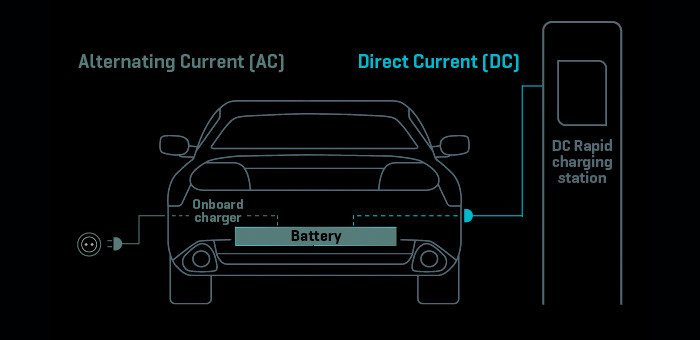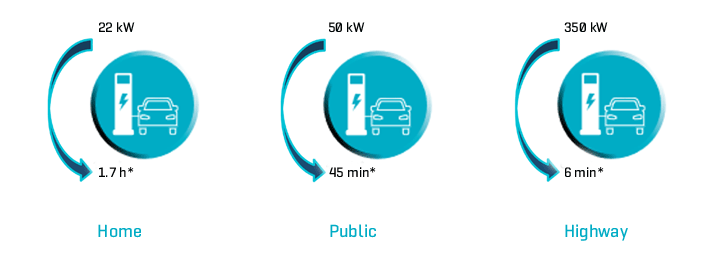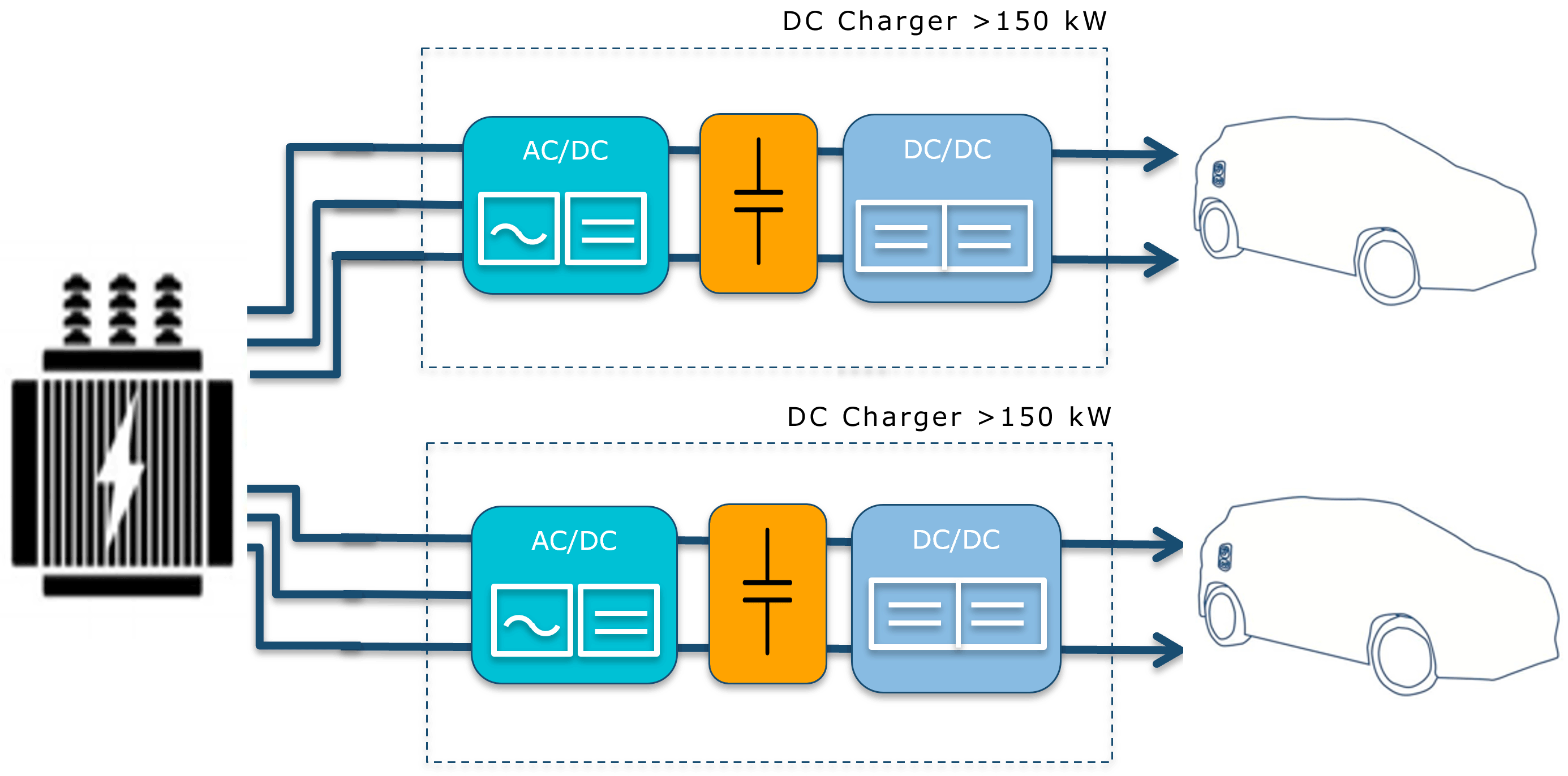
DC Fast
Charging Solutions
We use cookies to analyse the views of our website and for personalized advertising. By using our website, you agree to such analysis. More information.
Charging the Future
EV Charging
Chargers can be separated mainly into two categories: slow and fast chargers.
Slow AC on-board chargers and fast off-board chargers
- Slow chargers rated for up to 22 kW or lower run mainly on alternating current (AC).
They draw AC from the grid for the vehicle’s on-board charger (OBC) to convert and convey to the battery. Many homes as well as public and company parking lots are equipped with these AC charging wall boxes. - Fast chargers with power ratings higher than 22 kW all deliver direct current.
They convert the power before sending it on to the vehicle, which is why they are also called off-board chargers. As the name would suggest, fast chargers take a lot less time to top off batteries. They are generally found in public spaces, business and shopping areas and at highway charging stations.
* Charging time for 190 km @ 80% SoC, assuming an avg EV battery capacity of 48 kWh and an avg EV consumption of 20 kWh/100 km
Several co-existing standards and IEC norms regulate and standardize AC and DC charging technologies.
Three main charging protocols span the globe, the CHAdeMO (charge de move), the Combined Charging System (CCS) and the Tesla Supercharger. The only standard protocol implemented in China is GB/T, which is exclusive to the region.
Charger Trends
- Rising demand for higher power and shorter waits is driving the deployment of fast chargers in urban areas and along highways. The global market for fast chargers exploded from 2015 to 2020 with a compound annual growth rate (CAGR) of over 60 percent. Forecasts call for 40 percent growth from 2020 to 2025*. Battery voltage is also increasing from 400 V to 800 V
- Bidirectional charging has yet to go global. China and Japan are spearheading this trend; the EU is sure to follow in the years ahead. With bidirectional chargers, EV batteries can serve for use cases like Vehicle-to-Load (V2L) or Vehicle-to-Grid (V2G).
- Efficiency is to increase from today’s 95 percent to 98 percent. Wide-bandgap (WBG) components will help with that
- Reliability is a growing priority for chargers
- Most fast DC chargers are modular by design. Several 20-to-30 kW or 50-to-60 kW charger modules are connected in parallel to deliver the desired amount of power
* Source: IEA Global EV Outlook 2021
System architectures for fast DC Chargers
System Architecture 1
This is the state-of-the-art system architecture for DC Charger 10 kW up to 350 kW. Depending on output power, this can be a system built from one or more charger stacks. Supply is taken from low-voltage 3-phase grid.
System Architecture 2
The same as system architecture 1 but bi-directional. It is mainly designed for V2x applications.







